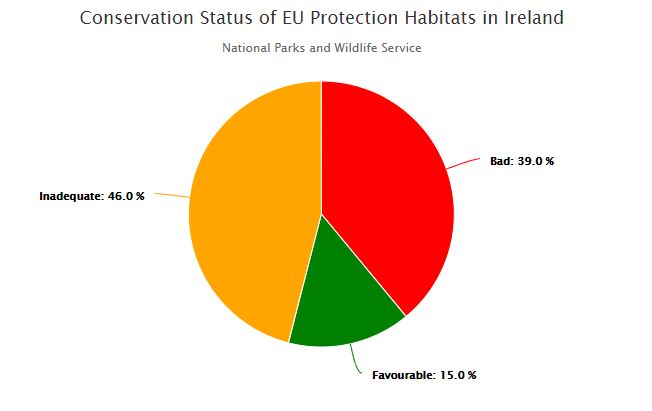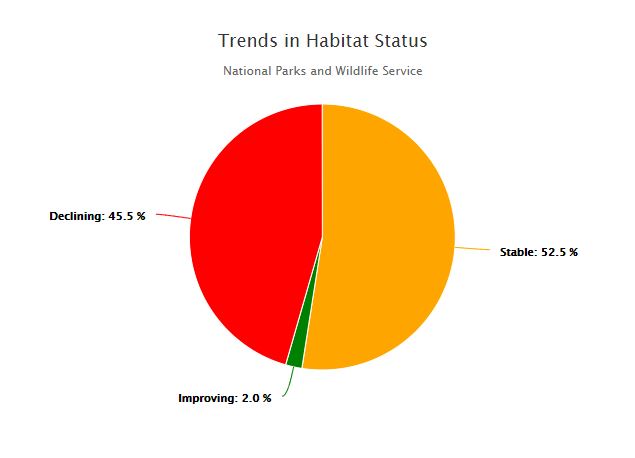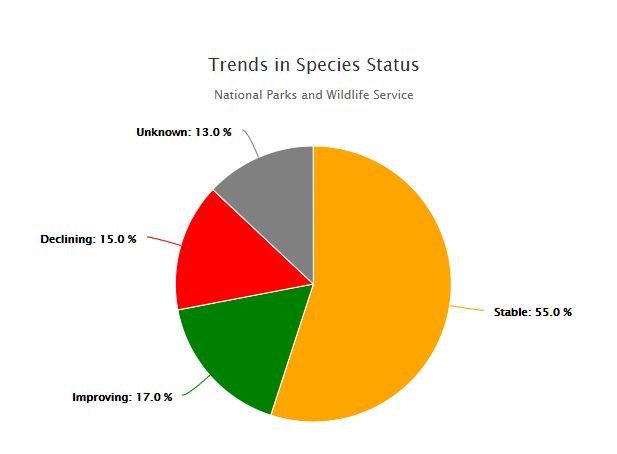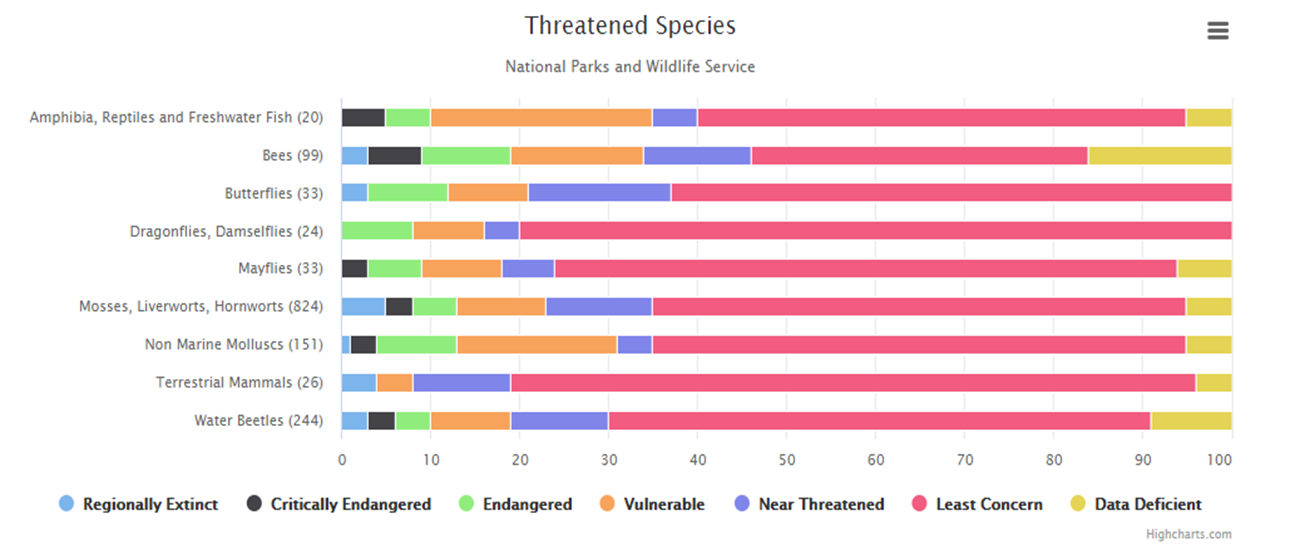In April 2019 the National Parks and Wildlife Service (NPWS), of the Department of Culture, Heritage and the Gaeltacht submitted the third Article 17 report on the assessment of the conservation status of habitats and species in Ireland protected under the EU Habitats Directive. The two previous assessments were reported in 2007 and 2013.
Reporting on the implementation of the EU Birds Directive under Article 12 was brought into closer alignment with that of the Habitats Directive since 2008, with the 6 yearly Article 12 reports being submitted in 2013 and 2019. These Article 12 Bird Directive reports are on the population and range and trends of regularly occurring breeding bird species as well as those wintering and passage species that trigger SPA (Special Protection Area) designations across the state.
These assessments serve as a bench mark for the status of biodiversity in Ireland.
Learn more about current trends
-chapter-6-soe-2020.jpg)
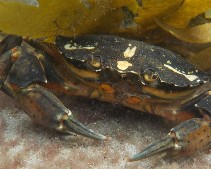
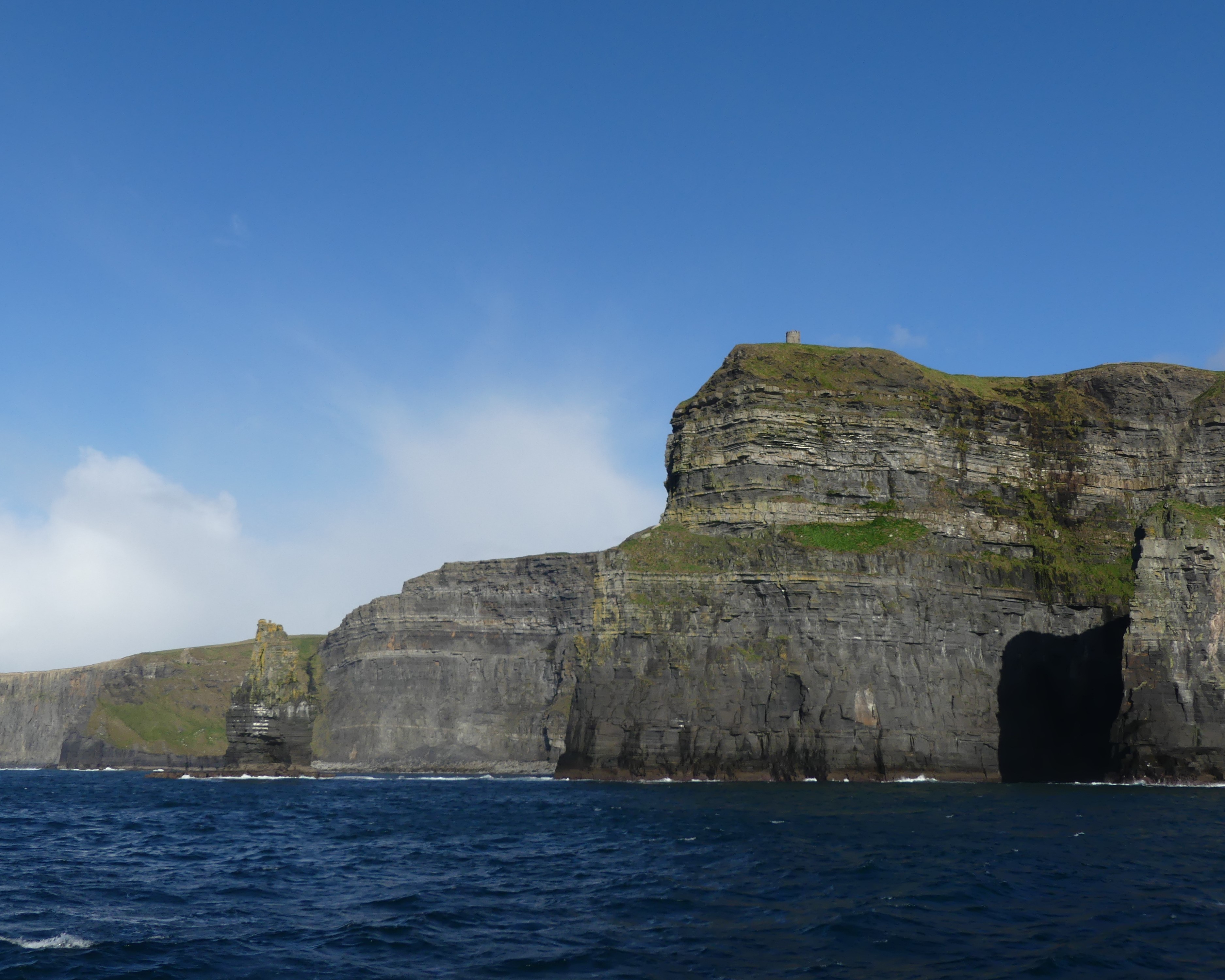
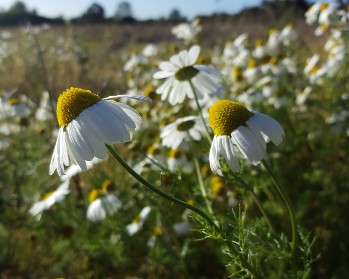
.jpg)
